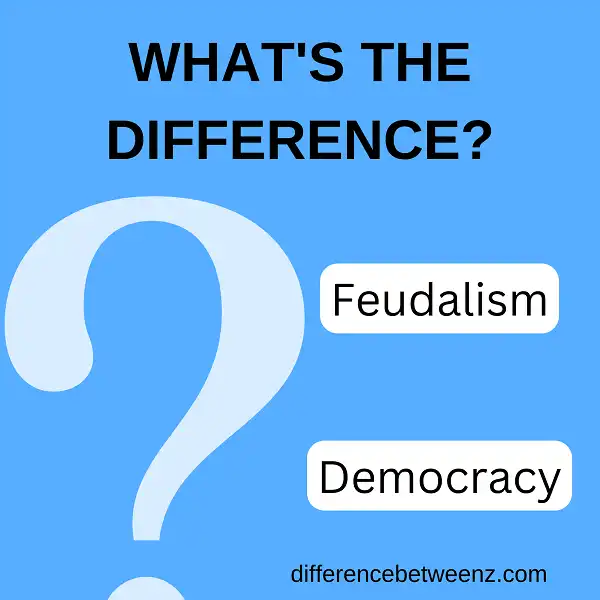In our society today, democracy is seen as the ideal form of government. But what is a democracy, and how does it compare to other forms of government? In this blog post, we’ll explore the differences between feudalism and democracy. We’ll also look at some of the pros and cons of each system. By the end of this post, you’ll have a better understanding of the different types of government systems that are out there. So let’s get started!
What is Feudalism?
Feudalism was a social and political system that developed in Europe during the Middle Ages. The system was based on the exchange of land for military service.
- Under feudalism, a lord owned all the land in a certain area. In exchange for the use of the land, people agreed to serve the lord by working on his land or fighting for him in wars.
- Feudalism helped to bring order to medieval society. It also allowed lords to raise armies more easily than before. However, feudalism had some negative effects.
- For example, it made it difficult for people to move from one area to another. Feudalism eventually declined in Europe as people began to question the authority of the nobility.
What is Democracy?
Democracy is a form of government in which power is vested in the people, and decisions are made through majority rule. The term democracy comes from the Greek words “demos” (people) and “kratia” (power), and it was first used to describe the form of government established by the ancient Athenians.
- In a democracy, all citizens have an equal say in the decisions that affect their lives. This includes the right to vote, the right to free speech, and the right to assembly. Democracy is based on the principle of majority rule, but it also protects minority rights.
- This means that even if a person or group does not agree with the majority, they still have the right to express their opinion and to have their voices heard. Democracy is not perfect, but it is still the best system of government that has been devised.
- It is a system that allows for change and for different voices to be heard, and it is a system that has proven to be resilient in the face of challenges. Democracy is worth fighting for, and it is worth defending.
Difference between Feudalism and Democracy
Feudalism was a system of government in which power was held by a lord or an upper class. The lord controlled the land, while the peasants worked it. In return for working the land, the peasants were given protection and food.
- Feudalism began to decline in the late Middle Ages, as people began to question the fairness of the system.
- Democracy is a form of government in which all citizens have an equal say in decisions.
- Democracies are based on the principle of majority rule, which means that decisions are made by the majority of people.
- This type of government is different from Feudalism because all citizens are considered equal, regardless of their social class.
Feudalism was replaced by democracy because people began to realize that everyone should have a say in how their country is run.
Conclusion
The feudal system was based on a hierarchy in which the king or lord was at the top, and the people below him owed him their allegiance and services. This rigid social order didn’t allow for much upward mobility, and most people were born into their station in life and stayed there. In contrast, democracy is based on the principle of one person, one vote.
Everyone has an equal say in how their country is run, regardless of social status or wealth. This allows for more opportunity and fairness, as well as change over time. While both systems have benefits and drawbacks, it’s clear that democracy is a better system overall for promoting individual freedom and equality.


